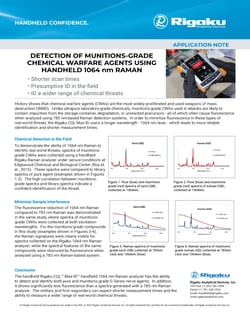Analysis of Chemical Warfare Agents with Handheld 1064 nm Raman
Introduction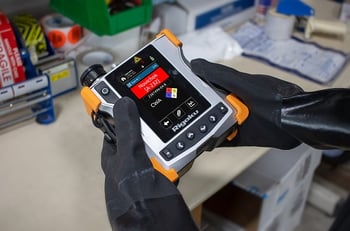
History shows that chemical warfare agents (CWAs) are the most widely proliferated and used weapons of mass destruction (WMD). Unlike ultrapure laboratory-grade chemicals, munitions-grade CWAs used in attacks are likely to contain impurities from the storage container, degradation, or unreacted precursors - all of which often cause fluorescence when analyzed using 785 nm-based Raman detection systems. In order to minimize fluorescence in these types of real-world threats, the Rigaku CQL Max-ID users a longer wavelength - 1064 nm laser - which leads to more reliable identification and shorter measurement times.
Chemical Analysis in the Field
To demonstrate the ability of 1064 nm Raman to identify real world threats, spectra of munitions-grade CWAs were collected using a handheld Rigaku Raman analyzer under secure conditions at Edgewood Chemical and Biological Center (Roy et al., 2015). These spectra were compared to library spectra of pure agent (examples shown in Figures 1-2). The high correlation between munitions-grade spectra and library spectra indicate a confident identification of the threat.
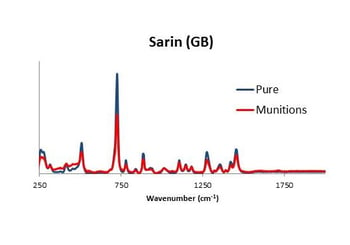 Figure 1. Pure (blue) and munitions grade (red) spectra of sarin (GB), collected at 1064 nm.
Figure 1. Pure (blue) and munitions grade (red) spectra of sarin (GB), collected at 1064 nm.
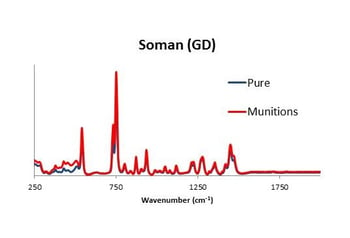
Figure 2. Pure (blue) and munitions grade (red) spectra of soman (GB), collected at 1064 nm.
Minimize Sample Fluorescence
The fluorescence reduction of 1064 nm Raman compared to 785 nm Raman was demonstrated in the same study, where spectra of munitions-grade CWAs were collected at both excitation wavelengths. For the munitions-grade compounds in this study (examples shown in Figures 3-4), the Raman signatures were clearly visible for spectra collected on the Rigaku 1064 nm Raman analyzer, while the spectral features of the same compounds were obscured by fluorescence when analyzed using a 785 nm Raman-based system.
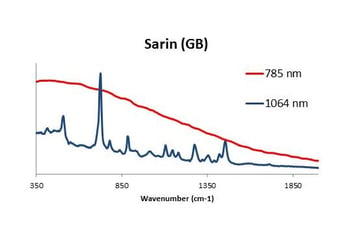
Figure 3. Raman spectra of munitions grade sarin (GB) collected at 785nm (red) and 1064nm (blue).
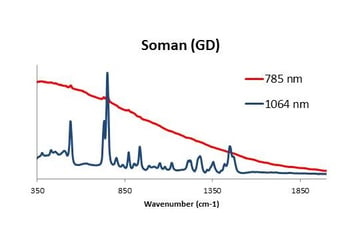
Figure 4. Raman spectra of munitions grade soman (GD) collected at 785nm (red) and 1064nm (blue).
Conclusion
The handheld Rigaku CQL™ Max-ID™ handheld 1064 nm Raman analyzer has the ability to detect and identify both pure and munitions-grade G Series nerve agents. In addition, it shows significantly less fluorescence than a spectra generated with a 785 nm Raman analyzer. The military and first responders can expect shorter measurement times and the ability to measure a wider range of real-world chemical threats.

Contact Us
Whether you're interested in getting a quote, want a demo, need technical support, or simply have a question, we're here to help.

